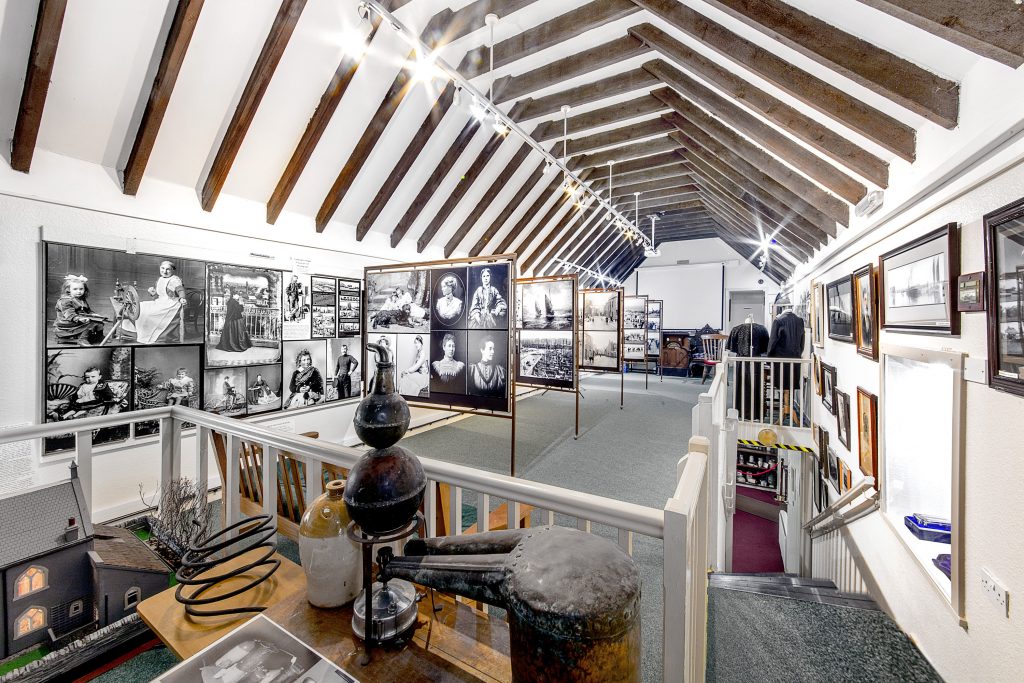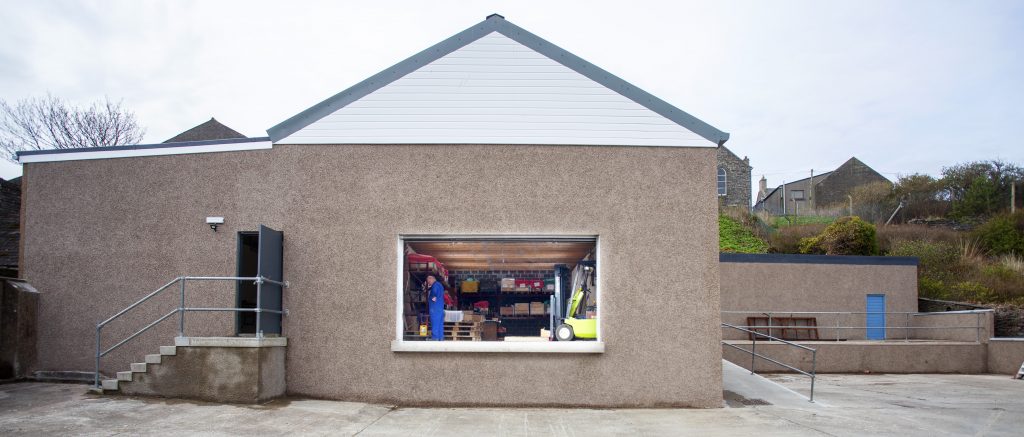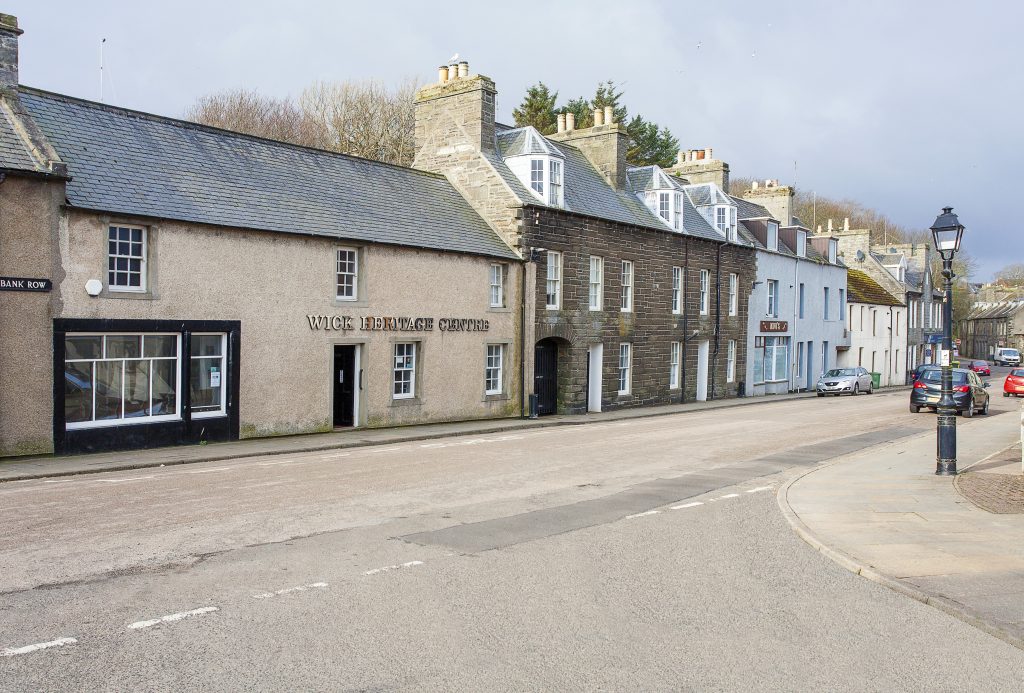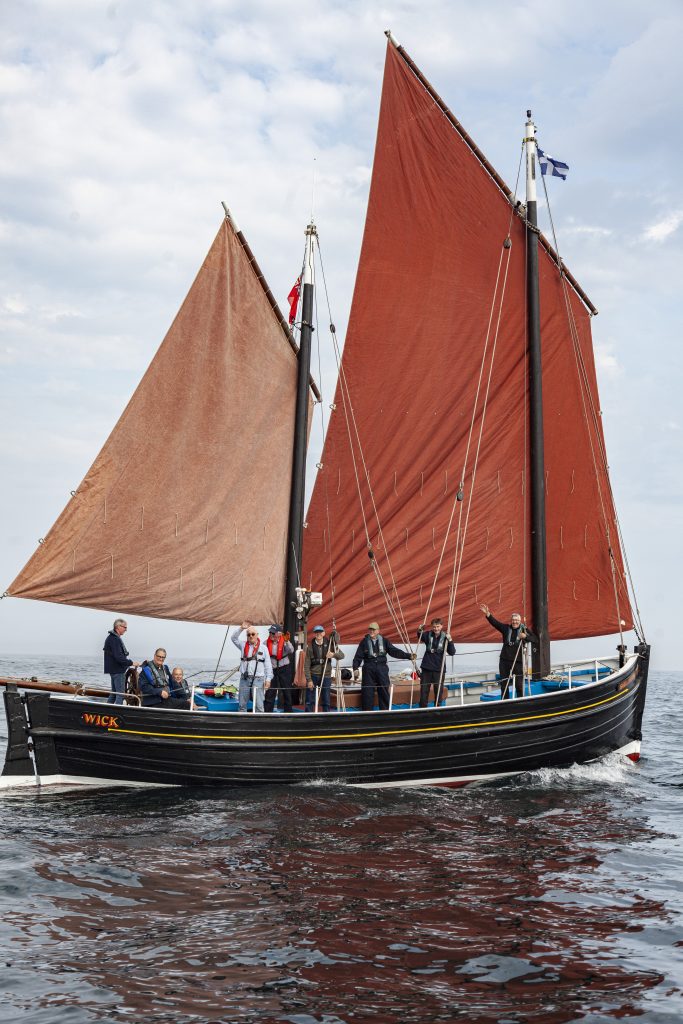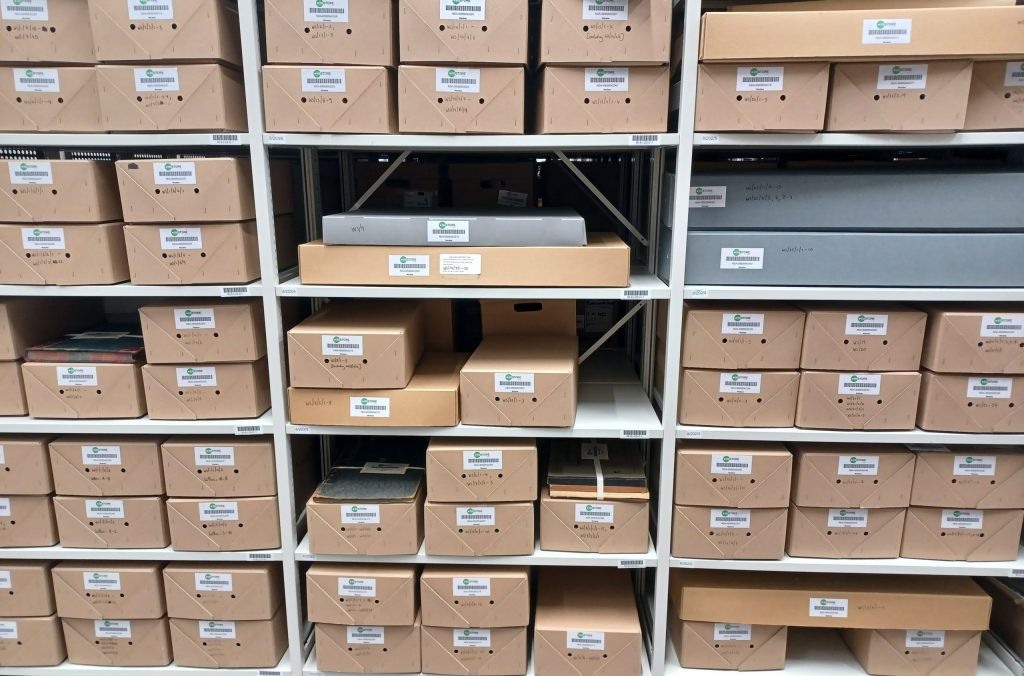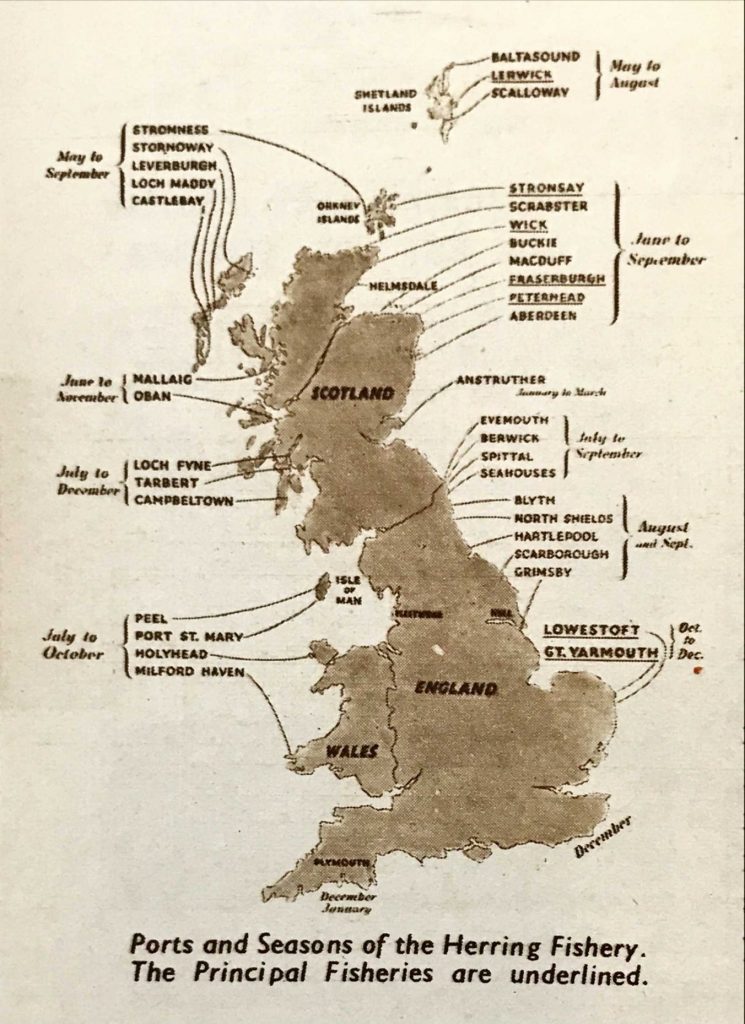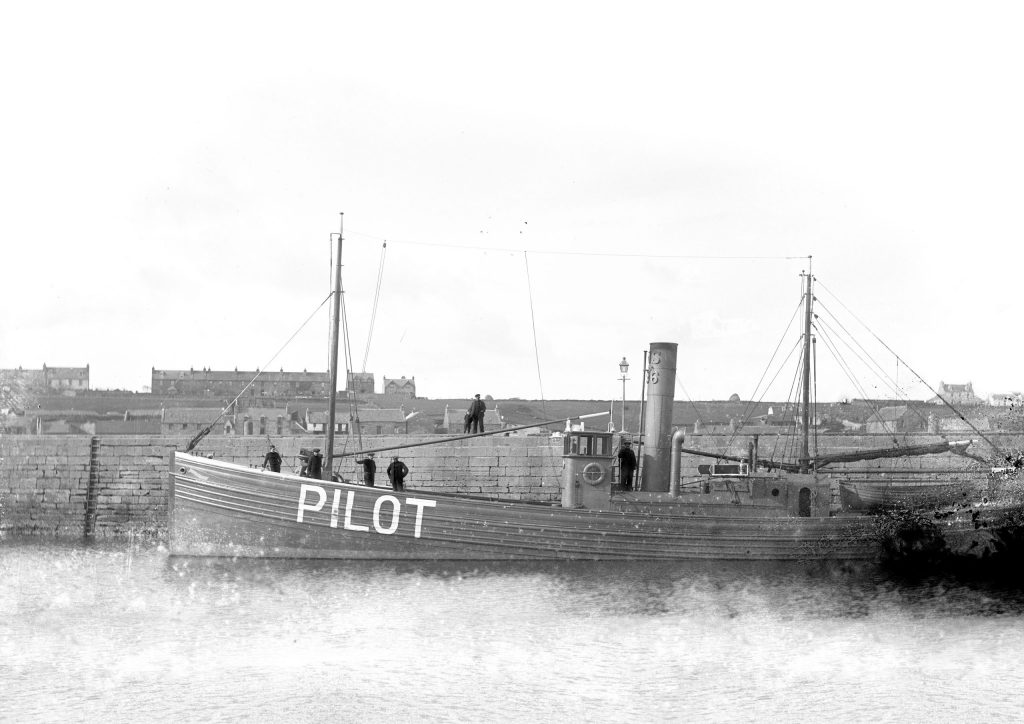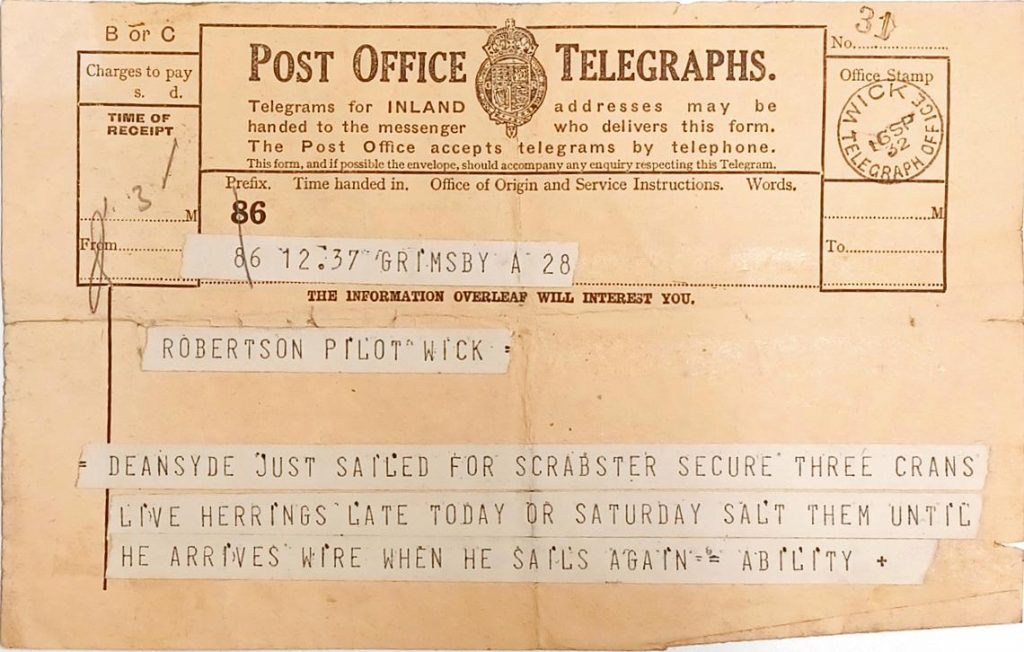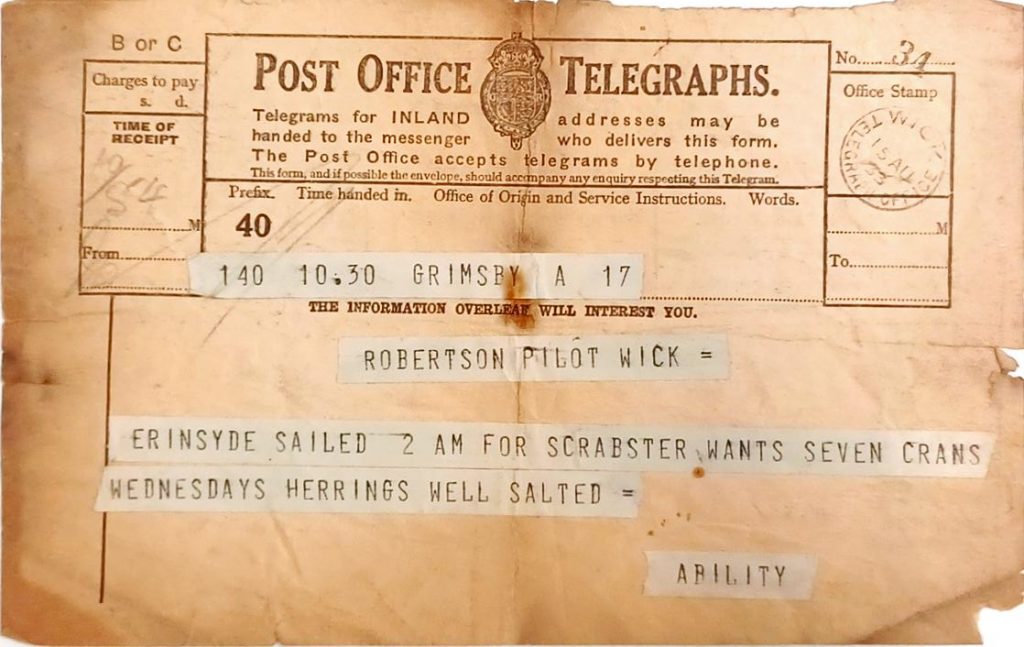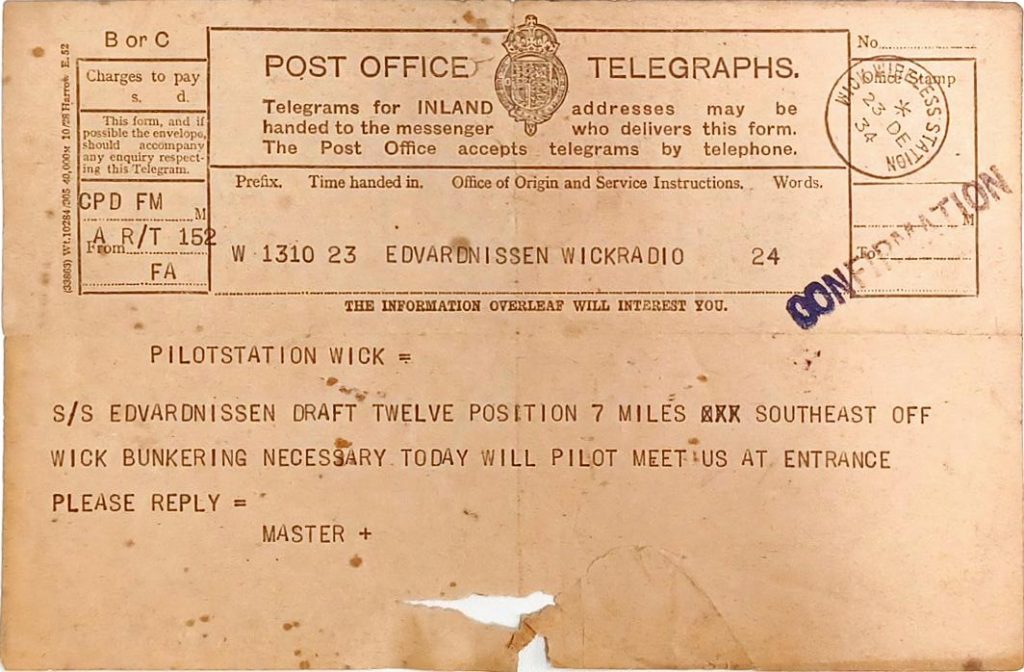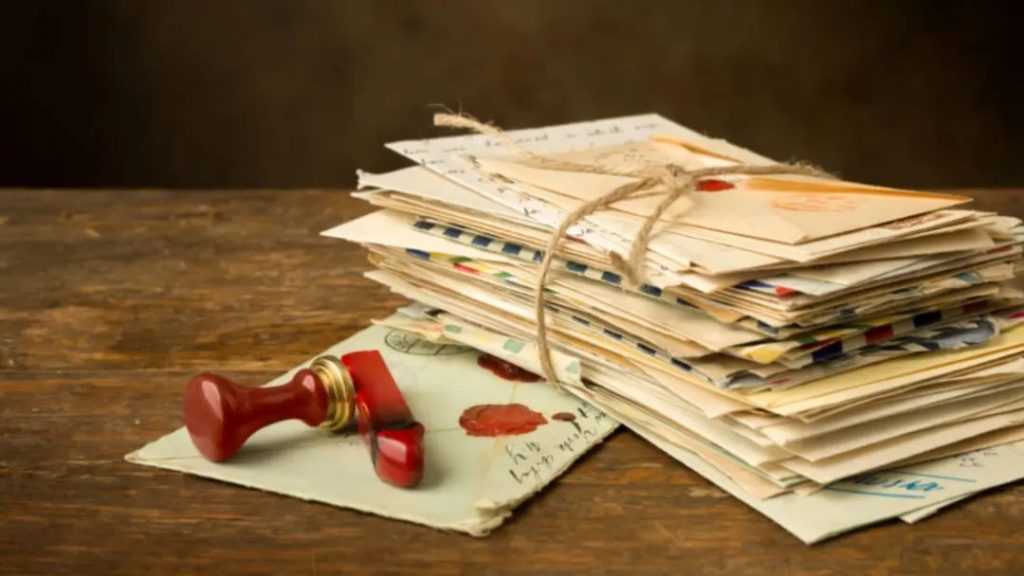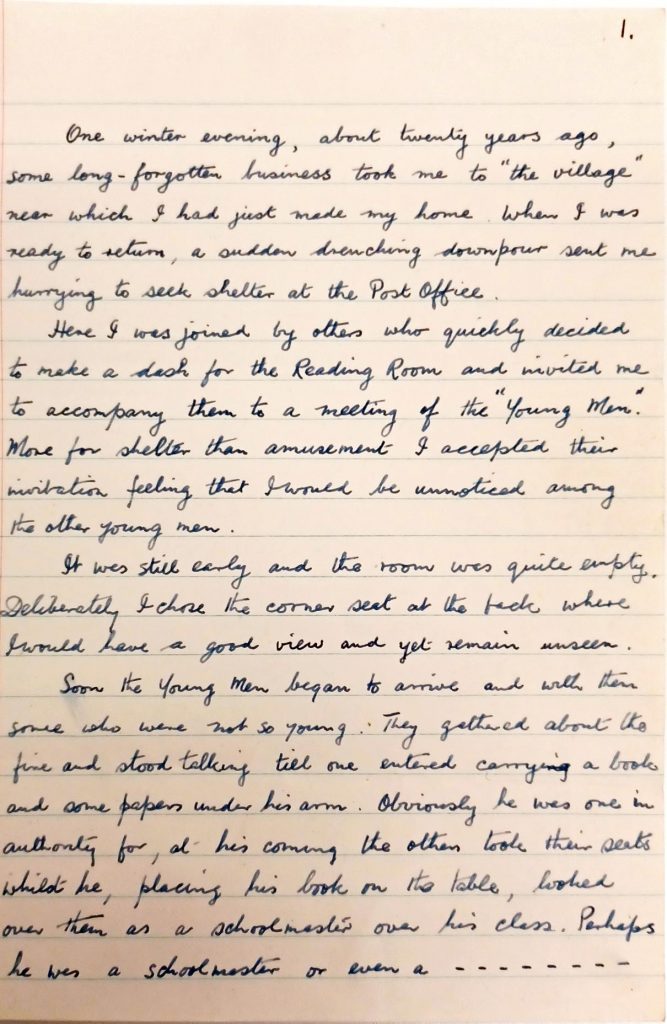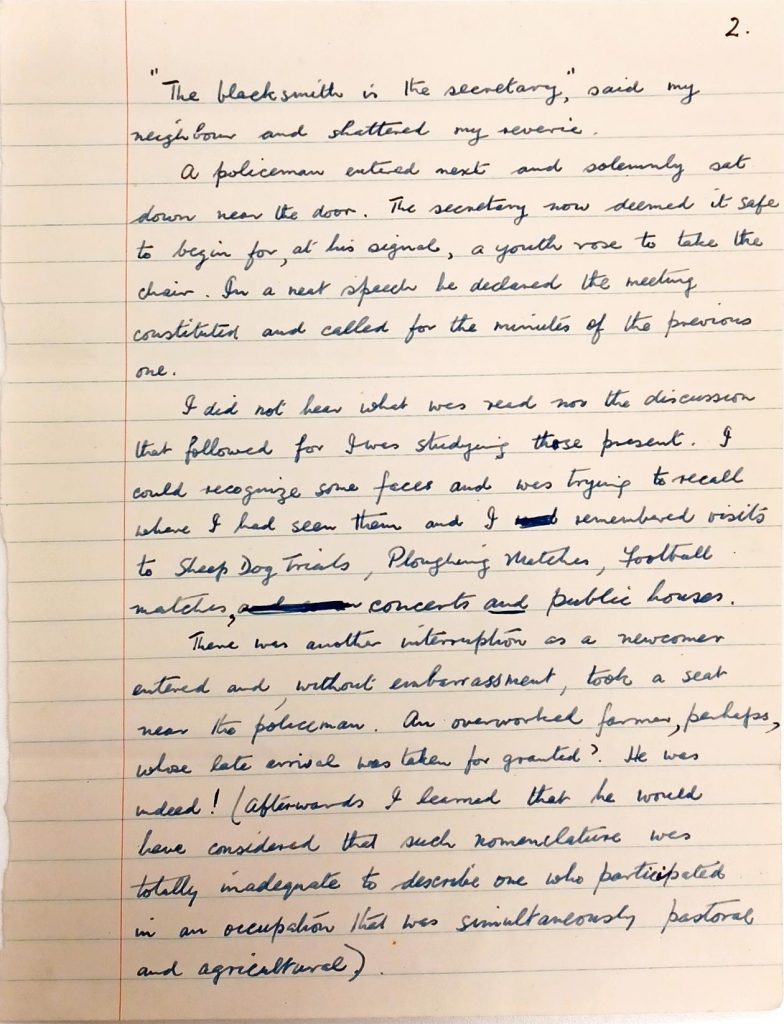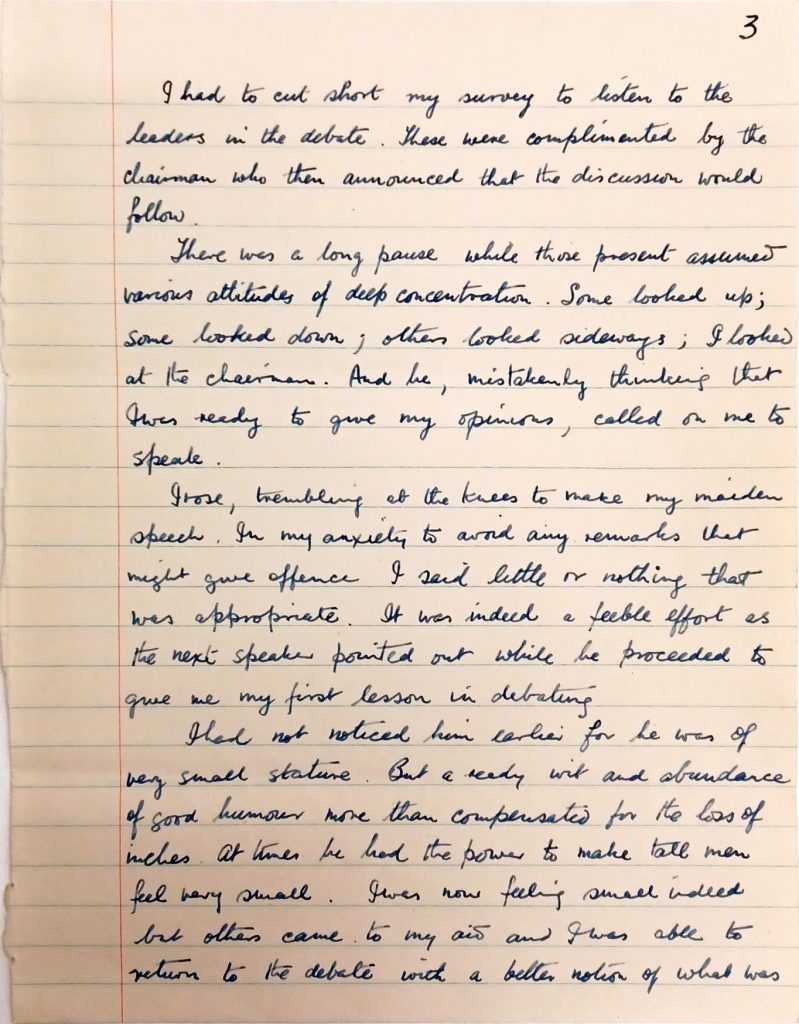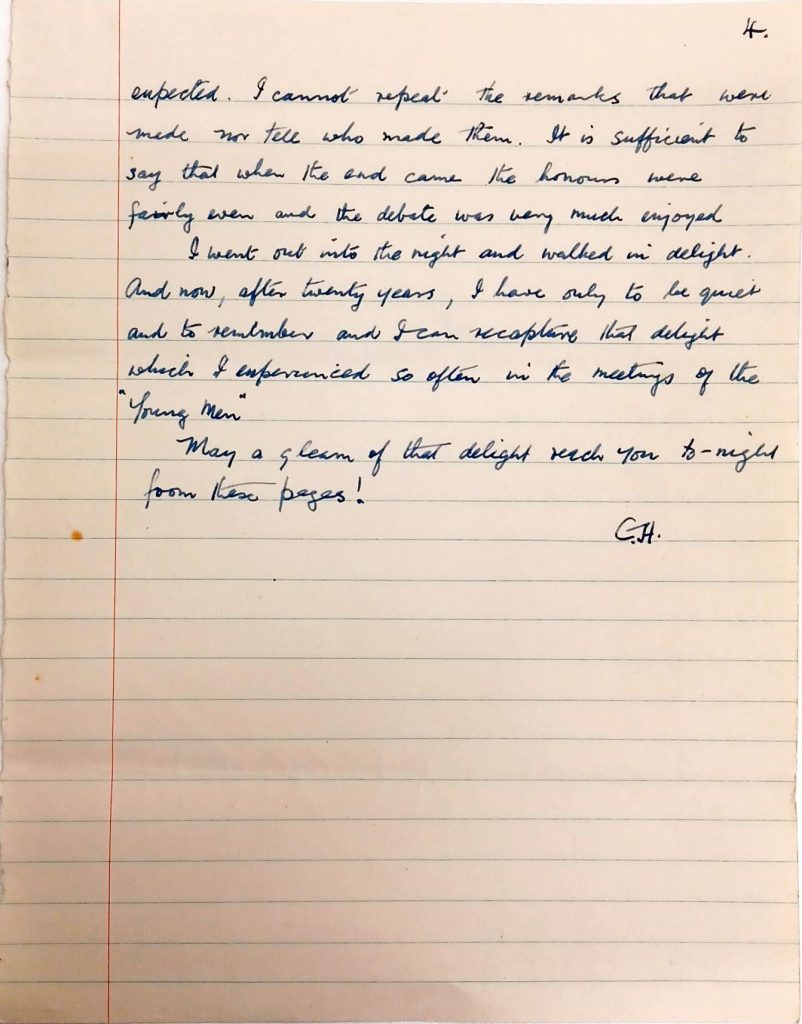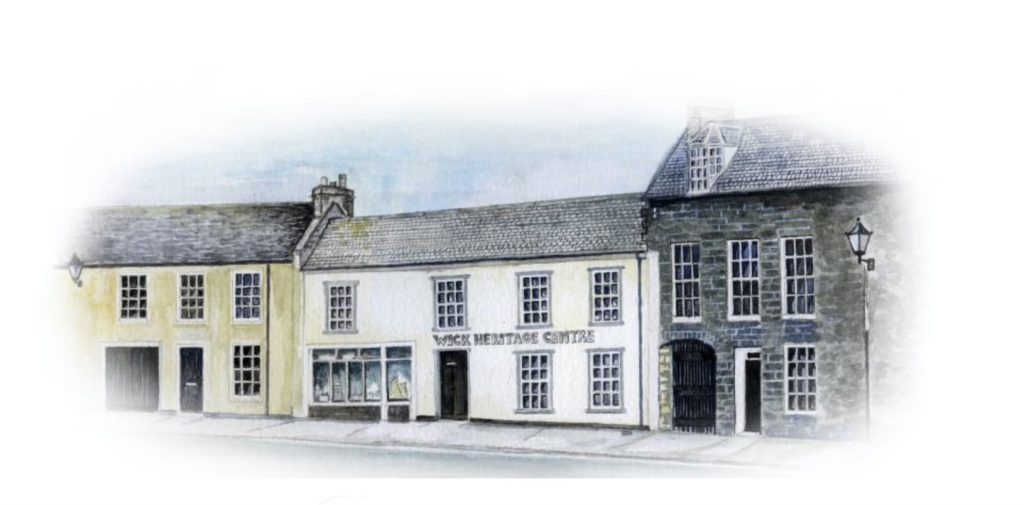
(Image courtesy of the Wick Society)
A Brief Introduction
In December 2023 we ran an exhibition at Nucleus to celebrate the launch of The Wick Society Collection (Ref. WS). It seemed only right that we share some of the amazing stories from the collection here. We also wanted to share the inspiring story of the Wick Society itself and the tireless work that its members and volunteers undertake to preserve and share Wick’s heritage.
The Wick Society Collection held at Nucleus is vast, comprising over 100 boxes, as well as maps and plans. It is extremely broad, with covering dates stretching from 1476 to the start of the twenty-first century. It is fascinating in its historical richness, documenting an eclectic mix of events, people and places from the annals of Wick and wider Caithness.
We’d also like to thank the Wick Society for all their help in preparing this blog.
Authors: Too many to list here!
The Wick Society Collection is comprised of 28 sub-fonds (or sub-collections) with more to follow! These are varying in both subject matter and chronological scope, all detailing the rich and absorbing history of the county.
The herring boom and the role of Wick within the fishing industry throughout the nineteenth and twentieth centuries is prevalent, both directly and indirectly, throughout many of the sub-fonds.
The Societies’ entrenchment within the county’s communities and involvement with local initiatives is also heavily reflected in the volume of material associated with societies, clubs and other social and cultural events. All sub-fonds are detailed in the contents page of the catalogue which can be accessed in PDF format HERE and through our ONLINE CATALOGUE.
Provenance: Private Deposit
Deposited by the Wick Society. The archives within the collection were both deposited with the Society by locals and businesses, and saved from irrecoverable loss by the keen and passionate work of Society members within the community. They were deposited with the Caithness Archive from December 2020 with additional records to follow.
Format: Charters, Sasines, Minutes, Correspondence, Business records, Photographs, Maps, Charts, Plans and many, many more!
Charters and Sasines concerning the resignation and conference of land in 15th century Caithness; records of the herring industry which transformed the town in the nineteenth century; Burgh and Council archives from the Poorhouse and other functions of local government; societies such as the Wick and Pulteneytown Mercantile Debating Society and Watten Young Men’s Mutual Improvement Association; sports and youth clubs like the Wick Trinkie Swimming Club, Northern Swimming Club and 1st Wick Scout Group; social events such as the Wick Herring Queen and Gala.
These are only a selection of the abundant stories, lives and happenings catalogued in the Wick Society Collection.
The Founding Of The Wick Society
Since 1971 The Wick Society has worked tirelessly to promote the history and heritage of Wick. Concern about the changing landscape and extensive demolition in the town led a group of like-minded people to call a meeting. The core group- Iain Sutherland, Mary Cabrelli, Marjory Mackenzie, and Jessie Sinclair resolved to establish the Wick Society.
In 1974 the Society set up a small museum within the Carnegie Public Library building. This depicted the coopering trade, and the success of the exhibition gave members of the Society confidence to expand.
Caithness County Council offered the lease of listed buildings in Bank Row to the Wick Society in 1980. Repairs and alterations were made to the buildings, the electrical system was upgraded, and the gardens were landscaped.
Wick Heritage Centre opened its doors in 1981. Iain Sutherland, The Wick Society’s founding chairperson said ‘The cooperation between the district council and the society, who were often at loggerheads over redevelopment, is unique. As we both recognised in our different ways, there was a need to preserve the town’s rich history. The Heritage Centre is an outstanding and rewarding result of what real cooperation between citizens and a council can do’.
On the 4 Feb 2002, the Wick Society bought the land and buildings to the East of the Heritage Centre to enable continuing development.
On the 6 Jan 2004, the Wick Society became a Company Limited by Guarantee, and the Wick Heritage Centre became The Wick Heritage Museum. The same year the Society purchased the museum buildings from the council for a nominal sum.
The Wick Society is committed to preserving and promoting Wick’s proud heritage for the inspiration of future generations. Today the Wick Society has under its wing a number of historic buildings and collections including Wick Heritage Museum, Cowie’s Yard, the Herring Mart, Lifeboat Shed, the Johnston Photographic Collection, the traditional Fifie fishing vessel the Isabella Fortuna, and Wick Voices oral history project.
Sections of the Wick Society
Wick Heritage Museum
The Wick Heritage Museum is located in the heart of the Thomas Telford designed Pulteneytown. Situated in premises that were once home to a number of businesses and families in Bank Row. The somewhat rambling building is something of an ‘Aladdin’s Cave’. As you enter the building a team of dedicated volunteer guides, each one with their own historical knowledge, await to share the history of Wick through the many rooms of displays.
While an obvious aim of the Heritage Museum is to collect, collate and display the many artefacts that tell the history of Wick, the ethos is one of welcome and sharing. To get the full value of the displays, visitors should allow themselves plenty of time, or as some do, make a number of visits.
Johnston Photographic Collection
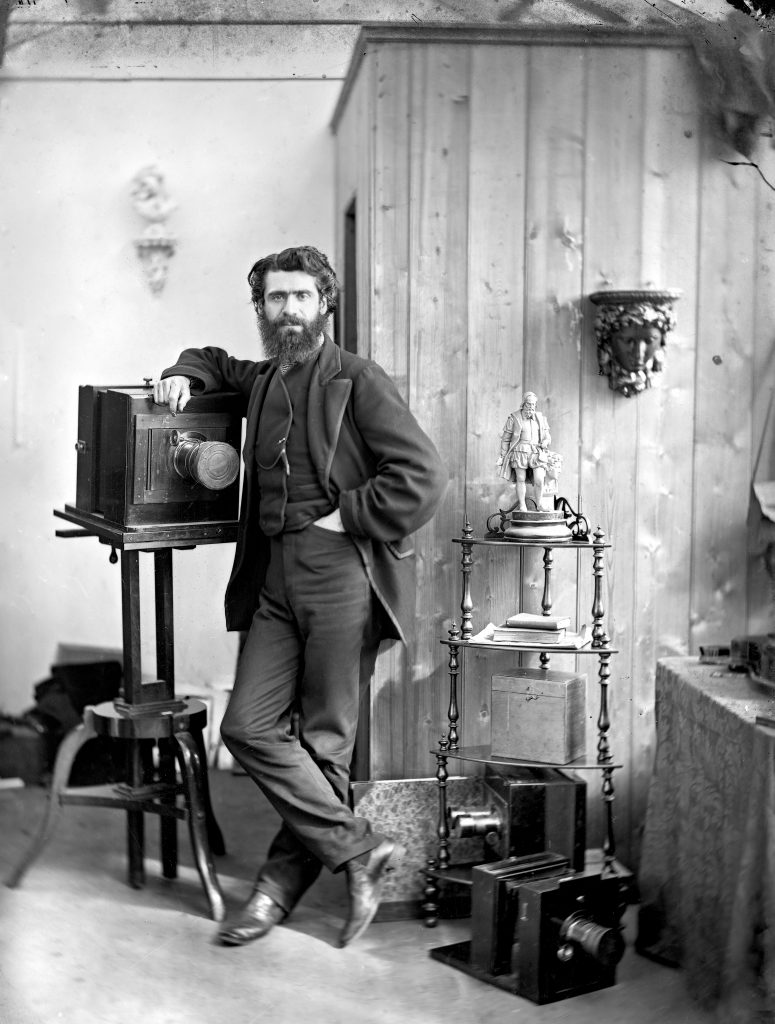
Alexander Johnston posed by camera in first studio – Copyright the Wick Society Johnston Collection (Ref. JN43447P222)
The Johnston Collection represents the work of three generations of Caithness photographers who captured images of life in and around the area between 1863 and 1975. During that period they produced around a hundred thousand glass plate negatives. Of these, around fifty thousand survive and are held in trust by the Wick Society.
The Johnstons captured an era when Wick was the herring capital of Europe. The silver darlings (as the herring were fondly known) used to attract over a thousand boats which crowded the harbour during August and September each year, and thousands of migrant workers would swell the town’s population. They were photographed preparing the boats, setting sails, landing catches, and onshore in scenes of intense activity.
Also photographed were teams of workers who gutted, cured, packed, and carted the salted herring for export across the world. The collection represents a unique record of Wick’s development and its importance as a major herring fishing port, as well as unique scenes from many other areas of industry and general life across Caithness and Sutherland.
Wick Voices

In 2016 Wick Voices, the Wick Society’s Oral History Section, embarked on an ambitious, long-term project aimed at collecting and preserving memories and information from the past. It is social history in its most natural form – as told by the people who have lived it. Wick Voices is a truly intergenerational project working closely with school pupils and older family members. Wick Voices is looking for people who are willing to tell their own stories, tell someone else’s story, reminisce about life experiences and describe times and artefacts from previous eras.
Boat Team and the Isabella Fortuna
The Wick Society bought the Isabella Fortuna from Hobson Rankin and Michael May, in 1997, for £6000. Mr Rankin kindly donated his share of the vessel to the Wick Society, to assist in using the vessel to promote Wick’s rich fishing industry heritage. Since then, enthusiastic volunteers have engaged on a continuous programme of renewal and restoration.
Major reconstruction, renewal and overhaul have been necessary to keep the boat seaworthy. The project has bought together people with a wide range of abilities and has provided an opportunity for traditional skills to be practised and passed on to younger generations.
In this The Wick Society acknowledges, with gratitude, the countless hours given by volunteers and skilled tradesmen in bringing the vessel to life. They also thank local businesses for the generous donations of money and materials that have made the restoration possible. These materials for the restoration, and the maintenance of equipment and fittings enable the vessel to meet modern safety regulations and standards.
The Isabella Fortuna is normally berthed in Wick Harbour, although during the winter months she is housed in the old Lifeboat Shed on the South shore of Wick Bay. This enables maintenance to continue throughout the year. With a voluntary crew the vessel visits other ports during festivals and sea-based events and as such promotes the aims and objectives of The Wick Society. In 2005 the Isabella Fortuna featured on the BBC Songs of Praise programme broadcast from Caithness.
And now… The Wick Society Archive Collection held at Nucleus
Stories From The Wick Society Collection
The Oldest Document in the Collection – 1476
The oldest document in the Wick Society Collection is also the second oldest document held by the Caithness Archive.
It is a Charter of Resignation in favour of William Earl of Caithness and Lord of St Clare, of all the lands of Noss, by Oliver Sinclair one of the sons of the said Earl. An image of the original charter and a Latin to English translation are shown below.
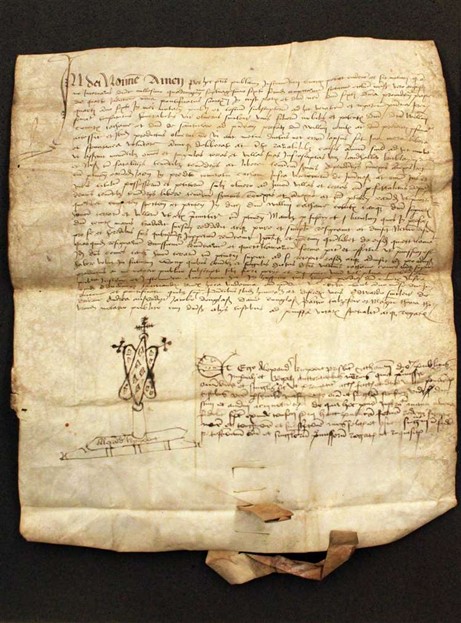
Charter of Resignation in favour of William Earl of Caithness and Lord of St Clare, of all the lands of Noss (Ref. WS/9/1) – image courtesy of Alan Hendry
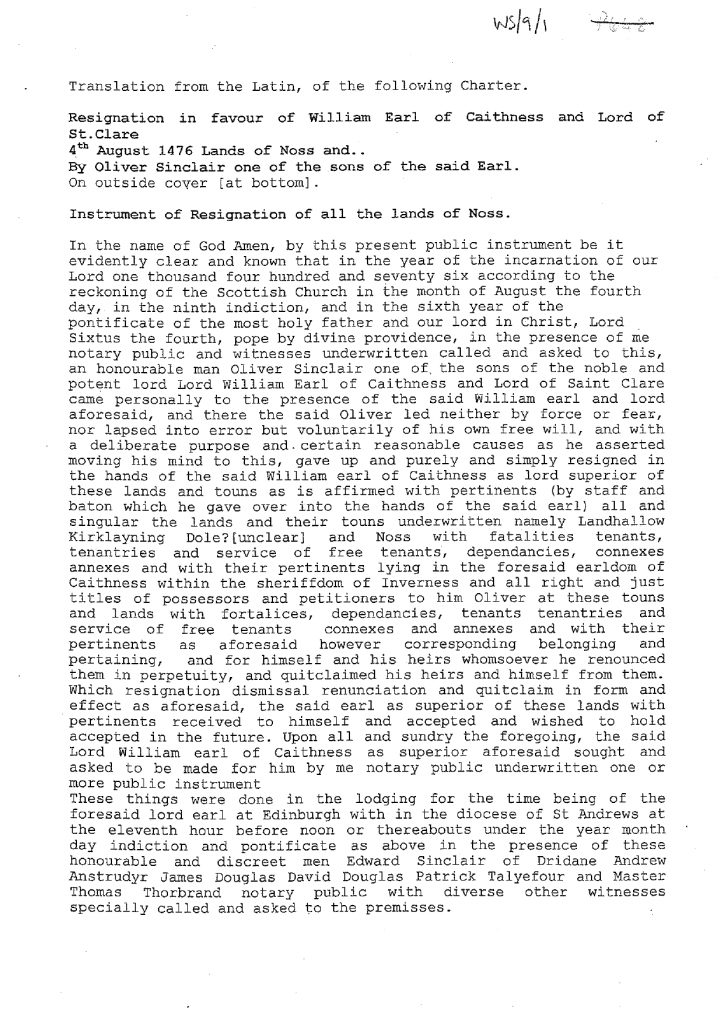
Transcription of Charter of Resignation in favour of William Earl of Caithness and Lord of St Clare, of all the lands of Noss (Ref. WS/9/1)
This archive dates from 1476 – that makes it 547 years old!
The Herring Industry
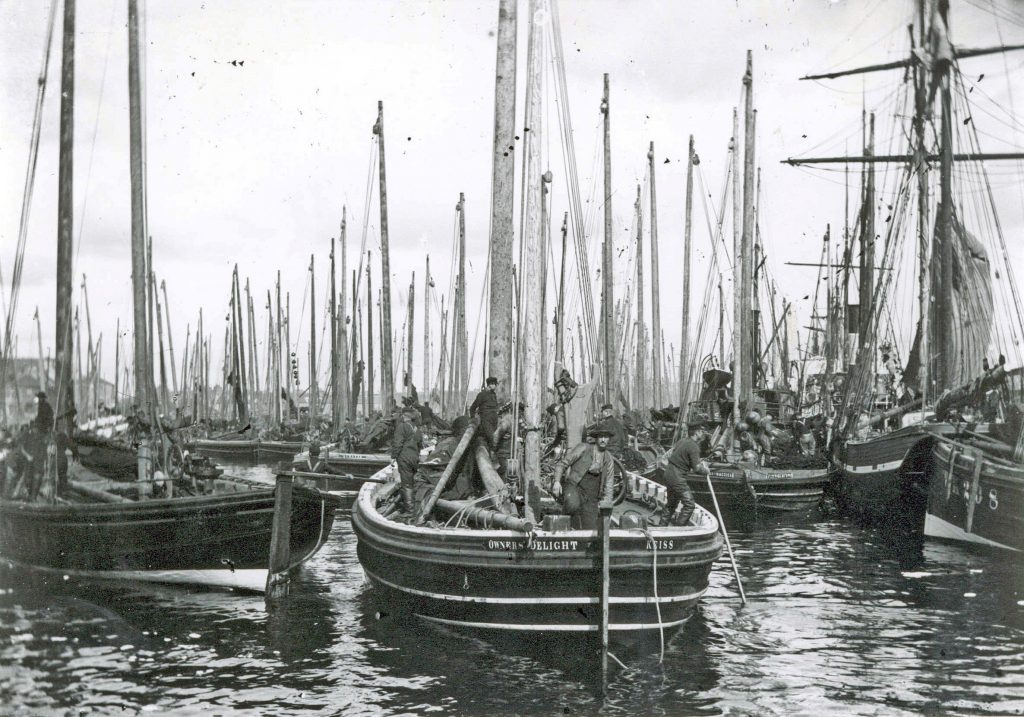
Wick Harbour, ‘Owners Delight, WK164, 51 feet, owner Bob Robertson, Keiss. Janets, WK208, 46 feet, owner A. Henderson, Wick’. Copyright the Wick Society Johnston Collection (Ref. JN20191B002)
Although Wick had been a port, the seat of a sheriff court and a royal burgh for hundreds of years, it was the British Fisheries Society development of a harbour on the south side of Wick Bay in the early nineteenth century that transformed Wick from ‘a place of little account’ to the largest herring fishing port in Europe. The Wick Society Collection includes an enormous amount of material covering the history of the harbour and herring industry. Shown here are just a few wonderful examples.
Donald Waters and Son, Fishcurers
A business established in Wick, Caithness and which had business concerns throughout the United Kingdom including in Lerwick, Fraserburgh, Barra, Invergordon, Gorleston on Sea, Great Yarmouth, Hartlepool, Stornoway and Peterhead. Donald Waters and his son also served as Agents for Lloyd’s London insurance company within Caithness. The collection includes business and financial records, legislative and official records, insurance records, herring industry records, Lloyd’s London records and both business and personal correspondence.
The correspondence from the collection gives insight into many aspects of the fishcuring and wider herring industry. For example, this series of letters was sent between Donald Waters and his son Don between 1928 and 1930, discussing various business matters related to the herring fishing and their business of curing, including the arrival of herring gutters in Gorleston on Sea.
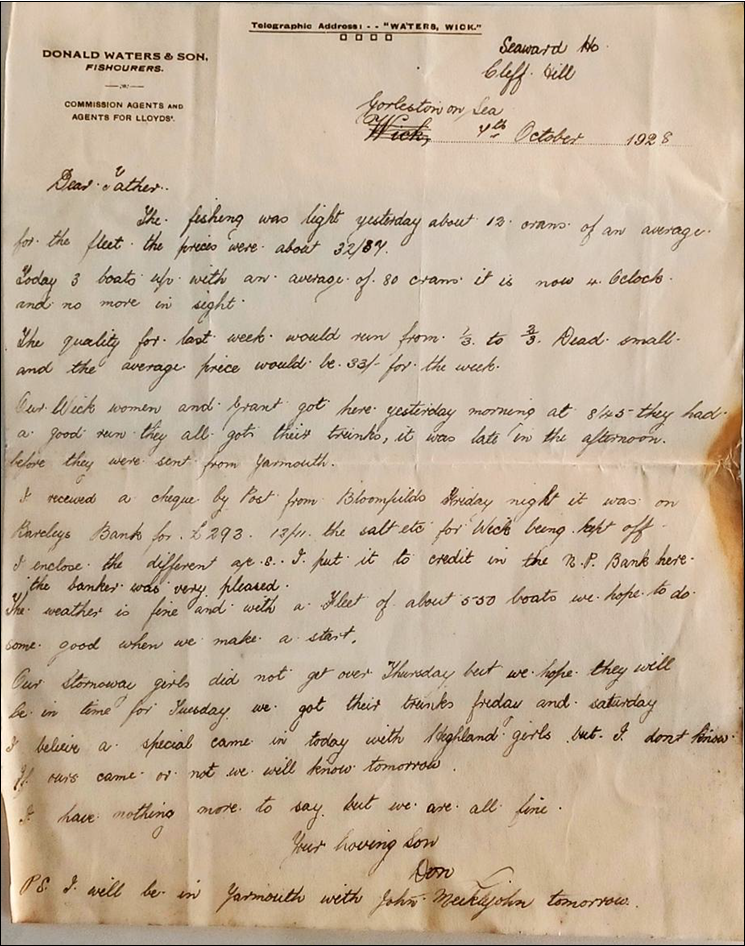
Handwritten letters of D. Waters Snr. and D. Waters Jnr. sent between Gorleston on Sea and Wick discussing herring fishing, vessels, sales and other business, 1928-1930 (Ref: WS/1/6/8/3)
“Dear Father,
The fishing was light yesterday about 12 crans of an average for the fleet, the prices were about 32/87…the Wick women… got here yesterday morning at 845 they had a good run they all got their trunks, it was late in the afternoon before they were sent from Yarmouth… Our Stornoway girls did not get over Thursday but we hope they will be in time for Tuesday… I believe a special came in today with Highland girls but I don’t know if this came or not we will know tomorrow”
From this correspondence and other letters received from herring gutters by Donald Waters and Son, we can trace the journeys of many gutting crews. It was an itinerant way of life, shown by the many ports and seasons of the herring fishery in the map below.
Wick Harbour Pilots
Harbour Pilots skippered Pilot Boats which would guide vessels into Wick Harbour. The whole bay is visible from the Pilot House (built 1908). Closed in 1953 it was abandoned until 1974 when local historian and Wick Society founder Iain Sutherland was instrumental in restoring it.
The Wick Society Collection includes Acts and regulations, financial records and correspondence of the Wick Harbour Pilots.
The correspondence includes telegraphs to and from the pilots. These telegraphs are wonderful sources of information for the comings and goings of vessels and their catches, as well as the important duties performed by the pilots themselves.
Latheron Combination Poorhouse
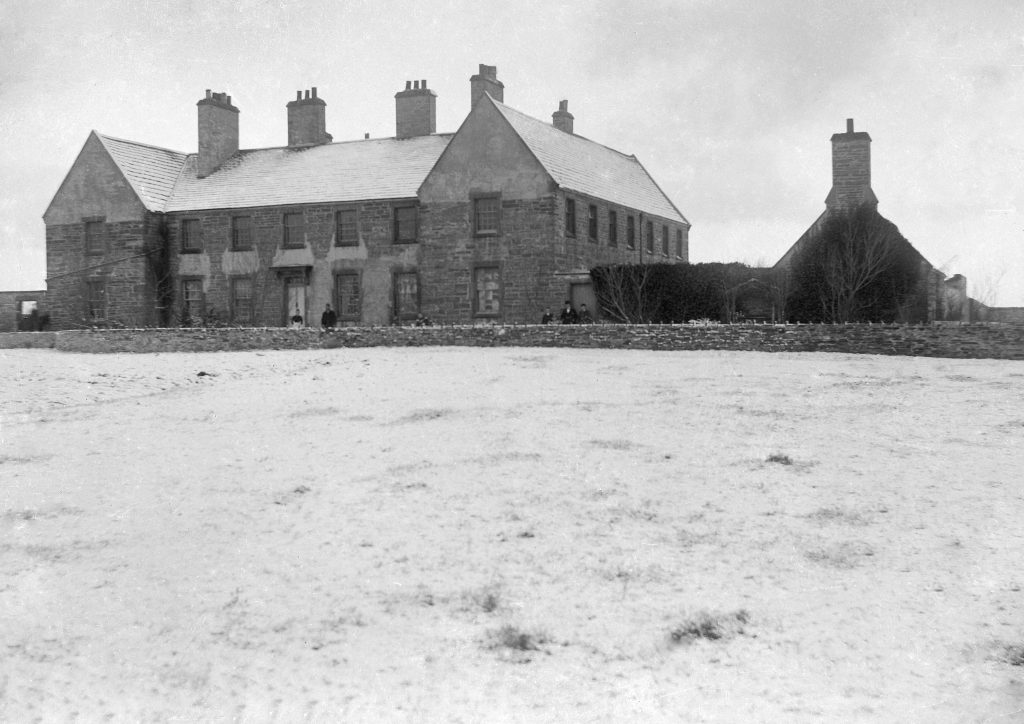
Latheron Combination Poorhouse c.1900. Copyright the Wick Society Johnston Collection (Ref. JN26099B056)
The Poor Law (Scotland) Act 1845 established parochial boards in rural parishes and towns, and a central Board of Supervision in Edinburgh. The parochial boards built poorhouses for those paupers who did not receive ‘outdoor relief’. More often parishes combined to build ‘combination poorhouses’.
Latheron Combination Poorhouse was formed in 1853 and served the parishes of Latheron and Wick. It was located at the east side of the Causewaymire Road to the north of Latheron at Braehungie and could accommodate up to fifty inmates.
The Levach/Levack Family
14th Jan 1911
The first mention of the Levach family is in a letter to the Latheron Inspector of the Poor regarding their poor living conditions. It also mentions an unusual number of illegitimate children within the household, and that Outdoor Relief cannot be granted.
Feb 1911
In February, Emma and all 3 of her illegitimate children were accepted into the Poor House. Their health was poor, and only one child was attending school at the time.
9th Mar 1911
By March, a letter regarding the family mentions that the Parish Council were undertaking the suggestions made and would be looking into repairing the Levach’s house.
18th Apr 1911
At the end of April, we find that Emma Levach or Levack managed to get employment in the fishing industry and would be making £3 to support herself and her children.
2nd May 1911
At the start of May, Emma informed the Poor House of the day she intends to leave to go to the fishing, also asking if they can look after the two oldest children until she gets settled at her job, as she intends to take the youngest with her which her mother will look after while she is working. Emma leaves the Poor House on the 8th of May 1911 with her youngest child. Her two older children were then discharged from the Poor House on the 10th May 1911.
30th Nov 1911
The repairs written of in March finally look like they’re going ahead at the end of the year in November 1911, when a letter was written specifying the repairs needed and the cost of each.
The Latheron Poorhouse records continue to be catalogued by archive staff – there are over thirty boxes of correspondence dating from c.1890-1930 and each letter is being individually described to ensure the highest level of detail is captured and made available to researchers. As the letters are catalogued they will appear on our online catalogue where they can be searched by key word search for names, dates and places.
Watten Young Men’s Mutual Improvement Association
The Watten Young Men’s Mutual Improvement Association was founded c.1863, and dissolved in 1962, when it was known as the Watten Mutual Improvement Association. The aim of the Association was to improve young men’s confidence, expression of ideas and encourage friendship between them while also bettering themselves.
George Henderson’s contribution to the Association magazine in 1957 includes this recollection of his first time attending a Watten Young Men’s Mutual Improvement Association meeting on a cold, wet, winter’s night twenty years earlier. A transcription is provided below each image.
One winter evening, about twenty years ago, some long-forgotten business took me to “the village” near which I had just made my home. When I was ready to return, a sudden drenching downpour sent me hurrying to seek shelter at the Post Office.
Here I was joined by others who quickly decided to make a dash for the Reading Room and invited me to accompany them to a meeting of the “Young Men”. More for shelter than amusement I accepted their invitation feeling that I would be unnoticed among the other young men.
It was still early and the room was quite empty. Deliberately I chose the corner seat at the back where I would have a good view and yet remain unseen.
Soon the Young Men began to arrive and with them some who were not so young. They gathered about the fire and stood talking till one entered carrying a book and some papers under his arm. Obviously he was one in authority for, at his coming the others took their seat whilst he, placing his book on its table, looked over them as a schoolmaster over his class. Perhaps he was a schoolmaster or even a – – – – – – – –
“The blacksmith is the secretary”, said my neighbour and shattered my reverie.
A policeman entered next and solemnly sat down near the door. The secretary now deemed it safe to begin for, at his signal, a youth rose to take the chair. In a neat speech he declared the meeting constituted and called for the minutes of the previous one.
I did not hear what was read nor the discussion that followed for I was studying those present. I could recognise some faces and was trying to recall where I had seen them and I remembered visits to Sheep Dog Trials, Ploughing Matches, football matches, concerts and public houses.
There was another interruption as a newcomer entered and, without embarrassment, took a seat near the policeman. An overworked farmer, perhaps, whose late arrival was taken for granted? He was indeed! (Afterwards I learned that he would have considered that such nomenclature was totally inadequate to describe one who participated in an occupation that was simultaneously pastoral and agricultural.)
I had to cut short my survey to listen to the leaders in debate. These were complicated by the chairman who then announced that the discussion would follow.
There was a long pause while those present assessed various attitudes of deep concentration. Some looked up; some looked down; others looked sideways; I looked at the chairman. And he, mistakenly thinking that I was ready to give my opinions, called on me to speak.
I rose, trembling, at the knees to make my maiden speech. In my anxiety to avoid any remarks that might give offence I said little or nothing that was appropriate. It was indeed a feeble effort as the next speaker pointed out while he proceeded to give me my first lesson in debating.
[I] Had not noticed him earlier for he was of very small stature. But a ready wit and abundance of good humour more than compensated for the loss of inches. At times he had the power to make tall men feel very small. I was now feeling small indeed but others came to my aid and I was able to return the the debate with a better notion of what was…
…expected. I cannot repeat the remarks that were made nor tell who made them. It is sufficient to say that when the end came the honours were fairly even and the debate was very much enjoyed.
I went out into the night and walked in delight. And now, after twenty years, I have only to be quiet and to remember and I can recapture that delight which I experienced so often in the meetings of the “Young Men”.
May a gleam of that delight reach you to-night from these pages!
G.H.
Afterword
We hope you have enjoyed reading about the history of the Wick Society, as well as the chance to explore just a few examples of the many stories within the Wick Society Collection held at Nucleus.
The collection continues to grow and the the Caithness Archive Team are ever excited to take in new historic records, catalogue them and make them available in our public searchroom.
If you would like to explore the collection yourself then you can visit Nucleus – our staff will be delighted to welcome you to the archive.
Read more Stories From The Archive

